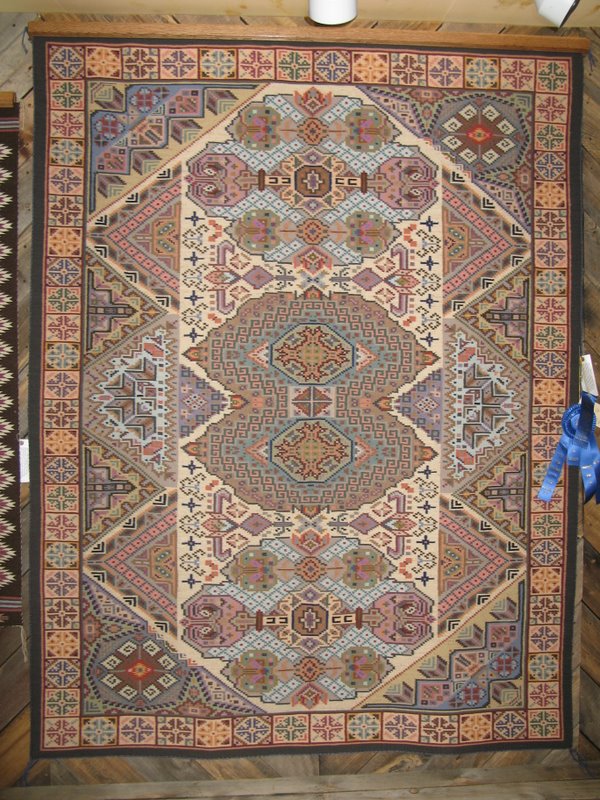On the Subject of Spirit Lines
I’ve got a meeting to get to tonight, so I’ll just do a brief follow up to the end of yesterday’s post on the Spiderwoman hole and its relationship to the spirit line. There’s a school of thought that runs along the line that most aspects of Navajo weaving, including the use of a spirit line, are tied to marketing. This ignores the extent to which a Navajo weaver’s economic life is bound to her spirituality.
The way it’s been explained to me is that weaving is a good way to make a living. It allows the weaver flexibility to care for children and a home and it helps to create a home atmosphere that celebrates the beauty and harmony that are traditional values of Navajo life. At the same time, the weaver can become very absorbed in the work, even to the point of an obsession that can destroy the balance of life. Weavers who use the spirit line express this need to release themselves from their work in graphic form, but many weavers, Navajo and non-Navajo, identify with the need to find that harmonious balance in one’s life and work. The rug below, by Ella Mae Nez, was woven based on her observation of Oriental carpets during a deployment in the Middle East. Ella Mae didn’t include a spirit line in the weaving, but it’s easy to see how this rug could have become an obsession!

